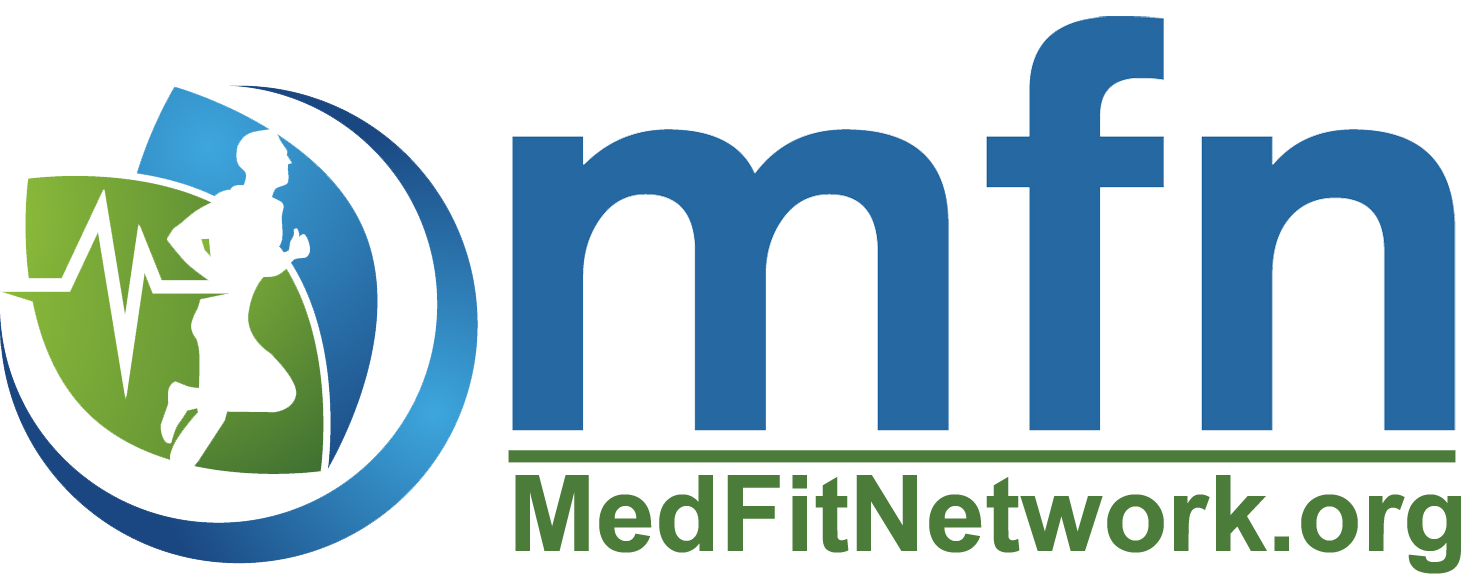Medical Fitness – A Win for Professional and Patient
Medical Fitness is a growing trend in health care. Medical Fitness helps extend basic healthcare from the classic and formal model of a person being a patient, receiving treatment and being discharged entirely, to after-care professional services. Medical Fitness is the integration of ongoing fitness, wellness and preventive care under the supervision of health professionals such as physical therapists, exercise physiologists, personal trainers, nutritionists, acupuncturists, chiropractors, massage therapists, mental health practitioners, health and wellness coaches, yoga professionals and more.
Medical Fitness is appropriate for many types of conditions such as arthritis, diabetes, orthopedic conditions, pre and post-natal, heart disease, fibromyalgia, stroke, cancer, mental disorders, and others. When properly implemented, Medical Fitness is a win-win for both patient and health professional.

Medical Fitness Advantages for the Patient
First, after discharge from the formal healthcare world, the patient can be referred to a variety of health professionals educated in the patient’s condition, providing both a continuum of care and a multi-discipline approach. For example, a person discharged from physical therapy after a total knee replacement might be referred to a certified personal trainer facility educated in post-rehabilitation of a total knee to continue to make further functional gains and improvements. If that person needed help with weight loss, perhaps a referral to a nutritionist would be included. If they also had issues with coping with their diminished function, a consult with a specialist in mental health might be provided as well.
Second, many times the medical facility in which care was provided will have a Medical Fitness component associated with it. Direct referral to this type of facility can provide the patient with security and confidence, being familiar with the facility and with the knowledge that the new health professional is familiar with their condition and diagnosis.
Medical Fitness Advantages for the Health Professional
First, by being part of a Medical Fitness community the health professional can refer a discharged patient for follow up care, secure in the knowledge that their patient will be cared for by an ancillary care professional who is trained and certified to provide a proper continuity of care plan along with the appropriate goals and treatments.
Second, by referring to a Medical Fitness multi-discipline team, the health professional receives security that if their patient has any other issues, those concerns will be addressed. For instance, with the example of the total knee replacement patient needing assistance with weight loss or nutrition consults, (treatments that don’t fall under the umbrella of physical therapy), the physical therapist is assured their patient will be helped to achieve a better transition back into their “non patient” status.
Third, when the health professional refers their patient into a Medical Fitness wellness and preventative care environment, the chance for overall improved outcomes is increased. Patients learn better self-confidence in caring for themselves, taking charge of their own health and lifestyle. If a patient’s condition begins to backslide, the wellness program professionals can help make sure the patient gets referred back to the health professional in a timely manner.
In conclusion, Medical Fitness benefits all involved. Quality of care is improved. Patients receive access to multi- discipline care and can learn to take charge of their life. Health professionals receive security of proper continuity of care and gain improved patient outcomes.
Douglas Feick, PT is a licensed physical therapist in Texas, with emphasis in orthopedics for over 15 years. He is President of BioEx Systems Inc, a software company providing software solutions for physical therapists, athletic trainers, chiropractors, dietitians and personal trainers. His hobbies include scuba diving, raising bees and he is an avid skydiver.


 If fitness and exercise are well accepted as part of the management strategy for multiple diseases, why is it that access to organized exercise plans, and fitness professionals who can help implement those plans, are not a standard part of the medical treatment paradigm? Why is it not a standard benefit covered by common medical insurance policies?
If fitness and exercise are well accepted as part of the management strategy for multiple diseases, why is it that access to organized exercise plans, and fitness professionals who can help implement those plans, are not a standard part of the medical treatment paradigm? Why is it not a standard benefit covered by common medical insurance policies?





 I’ve been to the mountain. Yes, I’ve been in the world of medicine. I’ve run my programs in hospitals, collaborated with physicians to address chronic disease, and spoken at medical conferences on topics ranging from “emotion and the patient” to “the healing powers of synergy.”
I’ve been to the mountain. Yes, I’ve been in the world of medicine. I’ve run my programs in hospitals, collaborated with physicians to address chronic disease, and spoken at medical conferences on topics ranging from “emotion and the patient” to “the healing powers of synergy.” The most important piece of creating an industry wide recognition of the trainer’s power is perhaps the dismissal of ego, the acknowledgement that trainers deemed competent in prescribing safe and effective exercise, have not learned to address metabolic imbalance, hormonal disruption, and inflammatory issues that underlie the most common conditions.
The most important piece of creating an industry wide recognition of the trainer’s power is perhaps the dismissal of ego, the acknowledgement that trainers deemed competent in prescribing safe and effective exercise, have not learned to address metabolic imbalance, hormonal disruption, and inflammatory issues that underlie the most common conditions.


 The leading Boomers are 63-72 and they are becoming “seniors” in a completely new way. In fact programs like Silver Sneakers, and other “senior” fitness programs, they are not attending, because as they would put it, those are for “old people ”….maybe for my mom or dad, but not me! This entire generation is breaking the mold on aging and is looking for something new, something cutting edge, something to give them a competitive advantage on their next 20-30 years. They want to give the grand kids a run for their money and they are only just beginning to take on new adventures. So they need personal trainers, group fitness instructors and fitness programming to be the best it can be.
The leading Boomers are 63-72 and they are becoming “seniors” in a completely new way. In fact programs like Silver Sneakers, and other “senior” fitness programs, they are not attending, because as they would put it, those are for “old people ”….maybe for my mom or dad, but not me! This entire generation is breaking the mold on aging and is looking for something new, something cutting edge, something to give them a competitive advantage on their next 20-30 years. They want to give the grand kids a run for their money and they are only just beginning to take on new adventures. So they need personal trainers, group fitness instructors and fitness programming to be the best it can be.
 People are living longer and, in some parts of the world, healthier lives. This represents one of the crowning achievements of the last century but also a significant challenge. Longer lives must be paid for. Societal aging may affect economic growth and many other issues, including the sustainability of families, the ability of states and communities to provide resources for older citizens, and international relations. The Global Burden of Disease, a study conducted by the World Health Organization and the World Bank, with partial support from the U.S. National Institute on Aging, predicts a very large increase in disability caused by increases in age-related chronic disease in all regions of the world. In a few decades, the loss of health and life worldwide will be greater from noncommunicable or chronic diseases (e.g., cardiovascular disease, dementia and Alzheimer’s disease, cancer, arthritis, and diabetes) than from infectious diseases, childhood diseases, and accidents.
People are living longer and, in some parts of the world, healthier lives. This represents one of the crowning achievements of the last century but also a significant challenge. Longer lives must be paid for. Societal aging may affect economic growth and many other issues, including the sustainability of families, the ability of states and communities to provide resources for older citizens, and international relations. The Global Burden of Disease, a study conducted by the World Health Organization and the World Bank, with partial support from the U.S. National Institute on Aging, predicts a very large increase in disability caused by increases in age-related chronic disease in all regions of the world. In a few decades, the loss of health and life worldwide will be greater from noncommunicable or chronic diseases (e.g., cardiovascular disease, dementia and Alzheimer’s disease, cancer, arthritis, and diabetes) than from infectious diseases, childhood diseases, and accidents. An important feature of population aging is the progressive aging of the older population itself. Over time, more older people survive to even more advanced ages. For research and policy purposes, it is useful to distinguish between the old and the oldest old, often defined as people age 85 and over. Because of chronic disease, the oldest old have the highest population levels of disability that require long-term care. They consume public resources disproportionately as well.
An important feature of population aging is the progressive aging of the older population itself. Over time, more older people survive to even more advanced ages. For research and policy purposes, it is useful to distinguish between the old and the oldest old, often defined as people age 85 and over. Because of chronic disease, the oldest old have the highest population levels of disability that require long-term care. They consume public resources disproportionately as well. Using data from the United Nations, U.S. Census Bureau, and Statistical Office of the European Communities as well as regional surveys and scientific journals, the U.S. National Institute on Aging (NIA), with input from demographers, economists, and experts on aging, identified nine emerging trends in global aging. Together, these trends present a snapshot of challenges and opportunities that clearly show why population aging matters.
Using data from the United Nations, U.S. Census Bureau, and Statistical Office of the European Communities as well as regional surveys and scientific journals, the U.S. National Institute on Aging (NIA), with input from demographers, economists, and experts on aging, identified nine emerging trends in global aging. Together, these trends present a snapshot of challenges and opportunities that clearly show why population aging matters. The emphasis in gerontological research has begun to shift from lengthening life to increasing years of health. The new goal is to shorten the period of time that people live in an unhealthy, dependent state. If scientific advances allow us to live 15 or 20 years longer, and if these 15-20 years consist mainly of pain, suffering, and dependence on others, what have we accomplished?
The emphasis in gerontological research has begun to shift from lengthening life to increasing years of health. The new goal is to shorten the period of time that people live in an unhealthy, dependent state. If scientific advances allow us to live 15 or 20 years longer, and if these 15-20 years consist mainly of pain, suffering, and dependence on others, what have we accomplished?